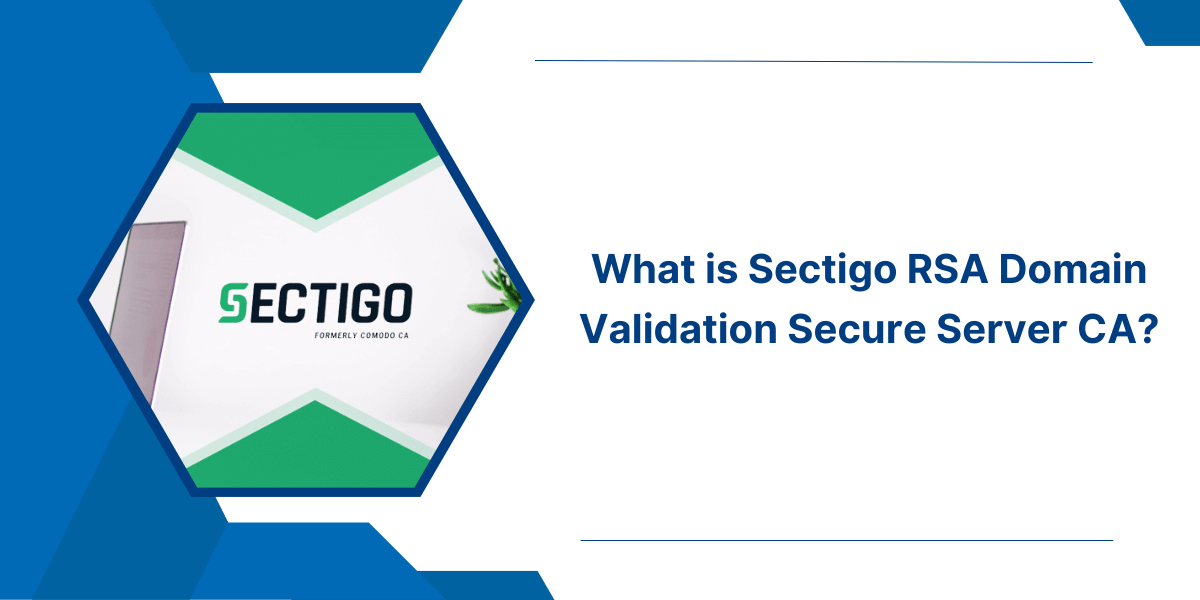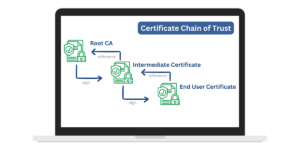What Is an SSL Certificate?
An SSL certificate is a digital file that verifies a website’s identity and enables encrypted communication through HTTPS. When a site uses SSL, the data shared between a visitor and the server is protected from interception. This encrypted connection is why browsers display a Tune icon and why users trust secure sites for payments, logins, and personal information.
As of January 2025, more than 86% of all websites now load over HTTPS, according to W3Techs. This widespread adoption shows that SSL is no longer optional – it is a core requirement for user trust, browser compatibility, and search engine visibility.
Why Do Websites Need an SSL Certificate?
Websites need an SSL certificate to prove their identity and to protect the data exchanged during browsing. Without SSL, the information sent through forms, logins, or checkout pages can be intercepted in plain text.
Browsers enforce stricter rules every year. In 2025, Chrome and Firefox continue blocking or warning users when a website lacks valid HTTPS, following standards set by the CA/Browser Forum. These warnings significantly reduce visitor confidence and can impact revenue, signups, and search rankings.
SSL also supports modern technologies like HTTP/2 and TLS 1.3, which improve site performance and security.
Benefits of SSL Certificate
How Does an SSL Certificate Work?
An SSL certificate works by establishing encrypted communication using public-key cryptography. When a visitor accesses a secure website, the browser and server complete a TLS handshake that verifies identity and negotiates encryption settings.
The process is nearly instant:
- The browser connects to the server and requests its certificate.
- The server sends the certificate and public key.
- The browser verifies the certificate using trusted Certificate Authorities.
- A unique session key is generated for the visit.
- The session key encrypts all communication.
This ensures that even if attackers intercept traffic, the information remains unreadable.
For an overview of the different certificate categories, many site owners start by reviewing the available SSL certificate types offered in the ecosystem.
What Information Does an SSL Certificate Include?
An SSL certificate includes several elements that browsers use to determine trust:
- Domain name covered by the certificate
- Company details (for OV and EV certificates)
- Certificate Authority that issued the certificate
- Validity period
- Public key
- Digital signature
- Supported algorithms
These details help browsers confirm whether they can trust the connection.
What Types of SSL Certificates Can You Choose From?
SSL certificates come in several varieties depending on validation level and domain coverage.
1. Domain Validation SSL certificate
- A Domain Validation SSL certificate verifies only domain ownership.
- Validation is completed through email, DNS, or file upload.
- This is the fastest and most common certificate option for simple sites.
2. Organization Validation SSL certificate
- An Organization Validation SSL certificate includes business details that have been checked and approved by the Certificate Authority.
- It displays verified company information, making it suitable for brands that want visible identity assurance.
3. Extended Validation SSL certificate
- An Extended Validation SSL certificate involves the most in-depth checks – legal, operational, and corporate verification.
- It provides the highest level of identity assurance and is commonly used by financial, legal, and enterprise-level websites.
4. Wildcard SSL certificate
- A Wildcard SSL certificate secures one main domain and unlimited subdomains.
This option is popular for companies running multiple sections of a website under a single structure.
5. Multi-Domain SSL certificate
- A Multi-Domain SSL certificate (also known as SAN SSL) protects several different domain names using one certificate.
- This is useful for businesses managing multiple properties across brands or regions.
How Is TLS Different From SSL?
TLS is the newer, more secure version of SSL. Although people still use the phrase “SSL certificate,” browsers rely on TLS – specifically TLS 1.2 and TLS 1.3.
TLS 1.3 is now the recommended version due to improved performance and reduced handshake time.
According to Statista (2025), more than 70% of HTTPS-enabled sites support TLS 1.3.
Browsers no longer support outdated SSL versions, so modern certificates always operate under TLS.
How Do Browsers Decide Whether to Trust an SSL Certificate?
Browsers maintain a collection of trusted Certificate Authorities.
When a website sends its SSL certificate, the browser checks it against these trusted sources.
If the certificate links back to a known, legitimate root authority, it is accepted.
If something is wrong – an expired certificate, a domain mismatch, or a missing intermediate file – the browser displays an error page.
Security researchers historically used mechanisms like HTTP Public Key Pinning (HPKP), although it has been deprecated, and some site owners still learn about it in archival references.
What Happens When an SSL Certificate Expires?
When an SSL certificate expires, browsers stop trusting the site.
Visitors see a full-screen warning, often blocking access until the user manually bypasses it.
Expired certificates:
- Damage search engine trust
- Reduce conversions
- Create security risks
- Interrupt API and app integrations
Businesses often use automated renewal systems to avoid outages.
How Do SSL Certificates Reduce Security Risks?
SSL certificates protect data in transit, preventing attackers from reading or tampering with communication.
They help reduce exposure to:
- Man-in-the-middle interception
- Session hijacking
- Packet sniffing
- Data modification
- Credential theft
SSL does not prevent every attack category. For example, site owners often learn about threats like a DDoS attack, which targets availability rather than encryption.
Does an SSL Certificate Make a Website Completely Safe?
An SSL certificate protects the connection, but it does not guarantee a website is safe.
Malicious sites can still use HTTPS.
SSL only proves encryption and domain control – not content quality or legitimacy.
Visitors still need to consider other signals such as the organization’s identity, reputation, and secure development practices.
For broader website security concepts, many site owners review the meaning of a website security certificate.
What Are the Validation Levels for SSL Certificates?
Different validation levels reflect the depth of identity checks:
| Validation Level | Identity Checks | Shown to Visitors | Best For |
| DV | Domain control | Tune Icon only | Small sites, blogs |
| OV | Legal entity verification | Business details | Company websites |
| EV | Full corporate verification | Highest identity trust | Banks, enterprise |
These levels help organizations choose the right signal for their audience.
How Do You Install an SSL Certificate?
Although each hosting environment is different, installation follows a similar pattern:
- Generate a CSR on the hosting panel or server.
- Submit the CSR to the Certificate Authority.
- Complete domain or business validation.
- Download certificate files.
- Upload the SSL certificate and intermediate chain.
- Enable HTTPS in server settings.
- Test the installation using an SSL checker.
Most modern hosts offer automated provisioning, making installation much easier.
What Are the Most Common SSL Errors?
Common SSL errors include:
- Expired certificates
- Incorrect hostnames
- Missing intermediate CA files
- Mixed content (HTTP assets on HTTPS pages)
- Unsupported TLS versions
- Invalid SAN entries
File format confusion can also occur. When handling secure email or signature data, some users encounter the P7M file extension, which stores encrypted or signed content.
How Long Does an SSL Certificate Stay Valid?
As of 2025, Certificates Authorities follow a maximum validity period of 398 days, based on rules from the CA/Browser Forum (2025).
Shorter lifespans reduce security risks by requiring more frequent validation.
Many businesses automate the renewal process so certificates never expire unexpectedly.
Upcoming Changes
Shorter validity periods phase in starting March 2026 to enhance security through frequent revalidation
- Certificates issued before March 15, 2026: Up to 398 days.
- March 15, 2026 onward: Maximum 200 days.
- March 15, 2027 onward: Maximum 100 days.
- March 15, 2029 onward: 47 days.
What Should You Consider When Selecting an SSL Certificate?
Selecting the right SSL certificate depends on:
- Number of domains or subdomains
- Business size and brand expectations
- Compliance requirements
- Audience trust level
- Validation timeframes
- Server compatibility
Smaller sites typically choose DV, while businesses often adopt OV or EV for brand assurance.
Are Free SSL Certificates Reliable?
Free SSL certificates support the same encryption strength as paid certificates, making them suitable for blogs, personal projects, and non-commercial websites.
Paid certificates add features such as:
- Warranties
- Business validation
- Flexible domain coverage
- Customer support
- Compatibility benefits
Organizations that rely on trust signals often choose OV or EV certificates.
Moving Forward With Secure Browsing and HTTPS
SSL certificates give websites encrypted connections and verified identity – two elements that define modern online trust.
With the growth of HTTPS worldwide and browser requirements evolving every year, having the right certificate is a fundamental part of running a secure and reliable website.
Whether you operate a personal project or a business platform, choosing the correct certificate type helps ensure a safe and dependable experience for all visitors.

Priya Mervana
 Verified Web Security Experts
Verified Web Security Experts
Priya Mervana is working at SSLInsights.com as a web security expert with over 10 years of experience writing about encryption, SSL certificates, and online privacy. She aims to make complex security topics easily understandable for everyday internet users.


